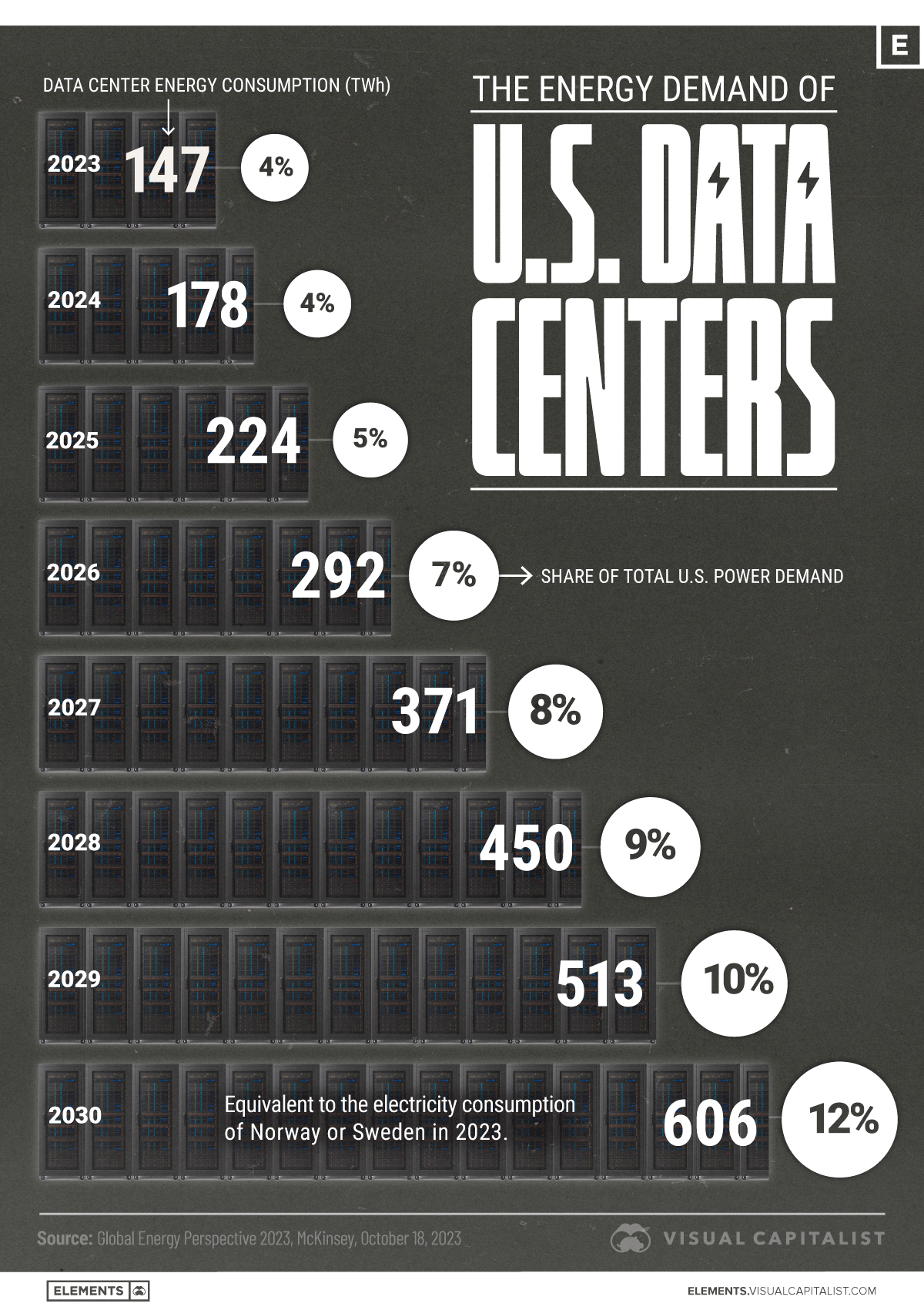Charted: The Energy Demand Of U.S. Data Centers (2023-2030P)
(Click on image to enlarge)

As the digital economy accelerates and generative AI becomes more deeply embedded in business and daily life, the physical infrastructure supporting these technologies is undergoing a transformative explosion.
In this graphic, we use data from McKinsey to show current and projected energy demand from data centers in the United States. Data is from October 2023.
U.S. Data Centers Could Quadruple Power Demand by 2030
Today, data centers account for roughly 4% of total U.S. electricity consumption. But by 2030, that share is projected to rise to 12%, driven by unprecedented growth in computing power, storage needs, and AI model training.
In absolute terms, U.S. data center energy demand is set to jump from 224 terawatt-hours in 2025 to 606 terawatt-hours in 2030.
| Year | Consumption (TWh) | % of Total Power Demand |
|---|---|---|
| 2023 | 147 | 4% |
| 2024 | 178 | 4% |
| 2025 | 224 | 5% |
| 2026 | 292 | 7% |
| 2027 | 371 | 8% |
| 2028 | 450 | 9% |
| 2029 | 513 | 10% |
| 2030 | 606 | 12% |
Meeting this projected demand could require $500 billion in new data center infrastructure, along with a vast expansion of electricity generation, grid capacity, and water-cooling systems. Generative AI alone could require 50–60 GW of additional infrastructure.
This massive investment would also depend on upgrades in permitting, land use, and supply chain logistics. For example, the lead time to power new data centers in large markets such as Northern Virginia can exceed three years. In some cases, lead times for electrical equipment are two years or more.
A Strain on the U.S. Grid
The U.S. has experienced relatively flat power demand since 2007. Models suggest that this stability could be disrupted in the coming years. Data center growth alone could account for 30–40% of all net-new electricity demand through 2030.
Unlike typical power loads, data center demand is constant, dense, and growing exponentially. Facilities often operate 24/7, with little downtime and minimal flexibility to reduce usage.
More By This Author:
Mapped: The World’s Most Expensive Real Estate MarketsRanked: Top Performing Equity Markets As Of May 2025
Ranked: The Top Chip Designers By Revenue (2019-2024)



